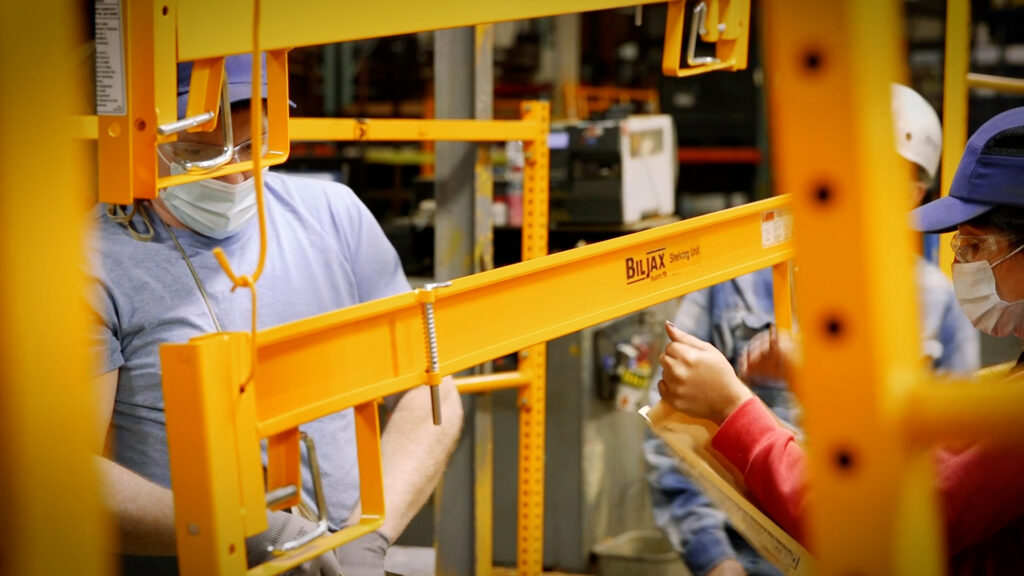A rolling tower makes working at height an easy and efficient alternative to scaffolding. Scaffold towers are smaller than full-size scaffolding, but optional wheels offer mobility, making it easy to move around a construction site.
Our Bil-Jax Rolling Tower Package offers a large work platform with adjustable platform levels and an easy-access guard rail system. Three sizes are available (10’, 15’, and 20’). All standard components are quick and easy to assemble.
Always review and reference the product instruction manual before assembly. We recommend all users of this equipment be supplied with safety information and OSHA rules and regulations prior to assembly and use. This information must be thoroughly read and understood before using the equipment. If you have not been provided with OSHA regulations or safety literature, please call 800-537-0540 or visit https://biljax.com/resource-category/literature.
Rolling tower products should only be used on solid, level, or clear floor areas. Do not use on soil or unlevel surfaces. Check for overhead obstructions that may interfere with the tower before use.
- Preparation
- Assess the area as solid, level, and clear of any debris.
- Before starting your scaffold assembly, check all parts for damage, making sure they are in proper working condition.
- Casters, Jacks & Baseplates
- Insert casters into the bottom of each scaffold frame and secure in place with a snap pin. Leveling jacks and base plates can also be used in place of casters. Reference the instruction manual for complete details.
- Bracing
- Bring one frame up and set brakes on casters.
- Attach cross brace to first frame, securing in place with frame brace locks.
- Bring the second frame up and set brakes on casters. Make sure ladder portions of the frames are on the same side.
- Attach a cross brace to the second frame.
- Attach a second cross brace to the frames.
- Cat-a-Corner Bracing
- Install cat-a-corner square bracing at the base below the bottom bar. Secure in place by engaging the sliding lock with a hammer.
- A cat-a-corner brace should be installed every 20 feet in height. Reference the instruction manual for complete details.
- Outriggers
NOTE: Outriggers are required when the base-to-height ratio exceeds your local safety regulations.
- Determine desired tower height to complete the job.
- Insert casters in the bottom of the outriggers and secure in place with a snap pin.
- Attach outriggers in line with the frame on each side. Secure in place by tightening clamps to frame leg, then set caster breaks.
- Adding Frame Sections
NOTE: All decking should be installed before assembling the next tier, and then moved up as each tier is complete.
- Place walk boards on the top bar and secure in place by engaging the wind locks.
- Raise the frames to the next level and place so ladder steps continue above one another. Secure frames together with pigtail pins, then raise cross braces to the next level. Secure in place with frame brace locks.
- Disengage walk board wind locks. Move two walk boards to the top bar of the newest frame section. The one remaining walk board will be used for personnel to assist with moving scaffold from the ground to the needed level.
- Repeat the above steps to reach your desired height.
- Guardrailing
- Move end guard panels to the top level. Place end guard panels on the frames and secure in place with pigtail pins.
- Move side guard panels to the top level. Install by connecting side guard panels to the end guard panels. Secure in place with frame brace locks, then install toe boards below the side guard panels. Secure in place with hinge pins.
The scaffold roll tower is now complete! Please reference the instruction manual for complete details and watch our rolling tower assembly video.

